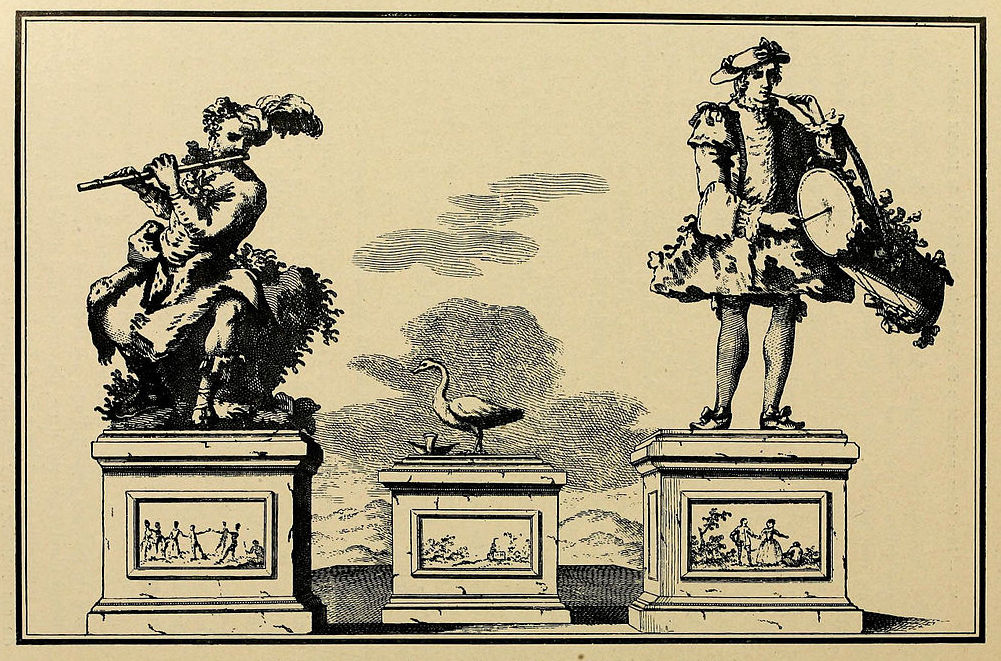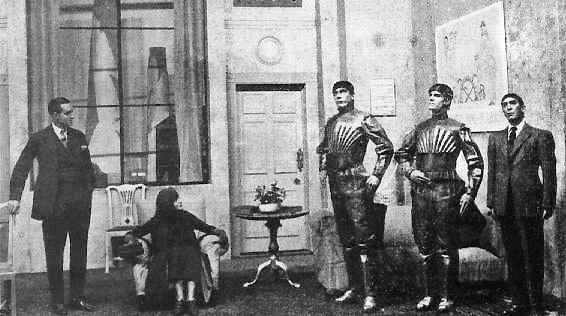“...nothing is stranger to man than his own image.”
Karel Čapek, R.U.R. (1920)
Promethean in creativity and ambition, the 18th century innovator Jacques de Vaucanson forged his legacy by dazzling audiences in Paris with his series of imaginative automata, most notably the Canard Digérateur, a mechanical duck capable of eating corn and defecating shortly thereafter.1 “Quaint as the duck now seems,” argues Stanford historian Jessica Riskin, “we remain in an age that it inaugurated; its mixed career set in motion a dynamic that has characterized the subsequent history of artificial life” (599). The notion that Vaucanson’s spurious masterpiece resonates with our modern era as much as it did at the time of its conception reveals the philosophical and functional challenges of an information society confronting the imminent reality of robots in our workforce and in our lives.
Vaucanson’s mechanical creations and others are the subject of Riskin’s essay "The Defecating Duck, or, the Ambiguous Origins of Artificial Life," which explores the early history of automata, or self-moving machines, and the challenges reflected in the relationship between creator and creation. The defecating duck, for example, made a bold assertion: that the process of digestion was mechanical rather than biological. This claim was later debunked after the discovery that the duck was not in fact digesting at all, but rather preloaded with digested material. Nevertheless, Riskin maintains that Vaucanson’s automata were “philosophical experiments, attempts to discern which aspects of living creatures could be reproduced in machinery, and to what degree, and what such reproductions might reveal about their natural subjects” (601). That is to say, Vaucanson called into question the extent to which simulating natural processes in machines allows us to discover and comprehend those discerning factors from which life emerges.

The era awakened by the defecating duck perpetuates itself as a kind of existential apophasis, the notion of defining what life is by what we have concluded it is not. Insofar as Vaucanson's historical and modern successors have been able to replicate behaviors associated with living beings in their machines, so too have we advaned our notions of what defines intelligence and life itself. As Riskin shows, “not only has our understanding of what constitutes intelligence changed according to what we have been able to make machines do but, simultaneously, our understanding of what machines can do has altered according to what we have taken intelligence to be” (623). It is a reciprocal relationship where the automata become interlocutors in the philosophical dialogue of humanity’s self-conception.
Fast forward to the early twentieth century when Czech playwright Karel Čapek published “R.U.R.,” short for Rossum’s Universal Robots. The play, a dramatic unfolding of events at an eponymously named fictional robotics corporation, first introduced the term robot to common parlance. The word came from the Czech robota, meaning forced labor2, and was an apt description for the story’s unwitting antagonists: humanoid machines indistinguishable from regular humans in appearance, but built for the express purpose of making labor cheap and subverting market competition.

Scene from R.U.R. depicting three robots, source.
Although at times tongue in cheek, Čapek’s robots echo the notion of automaton-as-interlocutor through their increasing sentience and eventual annihilation of the human race. What begins as a kind of flippant derision of robots as mere machines quickly evolves into an apophatic paradox. Their ability to speak, feel pain, experience human emotion, and even show immense capacity for destruction serves as a mirror that reflects very real human tendencies, much to the dismay of the story’s conflicted protagonists. Fabry, the technical director at R.U.R., insists during the first act that “nothing is farther from being human than a Robot,” and yet in spite of this perceived unlikeness, at the end of the story the company’s two most sentient robots come to embody Adam and Eve, the biblical progenitors of human life itself.
Čapek’s story now approaches its centennial and we are nowhere near the level of technical sophistication described in his prose. Considering the story’s cataclysmic ending, perhaps this is for the best, but where does that leave us today?
Early 2018 saw the opening of the new User Lab at the University of Luxembourg, a creative space and laboratory designed to facilitate the research activities of the Psychology department’s Human-Computer Interaction Research Group. The space is equipped to support comprehensive user testing and other innovative experimentation at the intersections of analog and digital, human and machine. One such experiment involves a small humanoid robot called Nao. Currently in its fifth generation, Nao is a commercial robot originally developed by SoftBank Robotics, formerly Aldebaran, that endeavors to bring robotics into common use.
Nao does not share the human verisimilitude of Čapek’s roboti, nor the supposed biological imperatives of Vaucanson’s defecating duck, but it still manages to closely approximate human movement, speech, and eye contact, among other programmable functionality. Interaction with it feels uncanny, as though one is indeed speaking to a sentient being, at least at first glance. In fact, the Nao has already made a name for itself as a useful tool for helping children with autism and as a Robocup champion.
The aspirations for the Nao at the University of Luxembourg’s User Lab, however, are far more humble. With growing interest in human-robot interaction, a subset of human-computer interaction that studies the integration of robots and other kinds of artificial intelligence into human activities, the HCI team hopes to include Nao as a helpful guide for new visitors to the lab. This robot-as-interlocutor could introduce visitors to the space, describe the experiment or research they have come to participate in, and answer any questions the visitors may have. It is likely that this would be especially effective in the case of young children who may interact more readily with a robot than an adult they have never met.
Fresh out of the box, the Nao has very limited functionality and must be programmed in order to serve as a useful guide. Although the robot is capable of speech recognition in multiple languages, it struggles to parse accents and complex phrases. One way around this limitation is to use the Wizard of OZ technique, a methodology within human-computer interaction where users engage with a seemingly autonomous system that a researcher controls from behind the scenes. This technique dates back to the work of John F. Kelley at Johns Hopkins University in the 1970s and 80s3, and remains a useful method to prototype technologies and overcome the present limitations of speech recognition. Visitors to the User Lab would thus interact with the Nao, which would be controlled remotely by a member of the HCI team. In doing so, the requirement for the robot to comprehend speech accurately is removed altogether.
As of now there remains a tremendous disparity between how we imagine robots to behave and how they actually perform. Historically speaking, the notion of the automaton extends at least as far back as antiquity4, but successful implementation continues to elude us. The challenges of simulating intelligence and life itself echo Riskin’s thesis, that Vaucanson and we as his successors participate in a reciprocal dialogue with our creations. Through automata, robots, artificial intelligence, and other interlocutors, we inch closer to discovering what it means to be ourselves.
- 1. In his "Discours en vers sur l'homme" (1738), Voltaire compares Vaucanson to Prometheus himself: "Le hardi Vaucanson, rival de Prométhée, Semblait, de la nature imitant les ressorts, Prendre le feu des cieux pour animer les corps."
- 2. For more information on the etymology, see NPR's piece on the origin of the term. Although Čapek's is credited for the creation of the word as we understand it, he discusses in the Dec. 24, 1933 issue of Lidové noviny that it was in fact his brother who came up with the idea.
- 3. For more information about this technique and its original attribution, please see Green & Wei-Haas' (1985) University of Michigan technical report.
- 4. See for example Homer's Iliad, 18.371-378.



